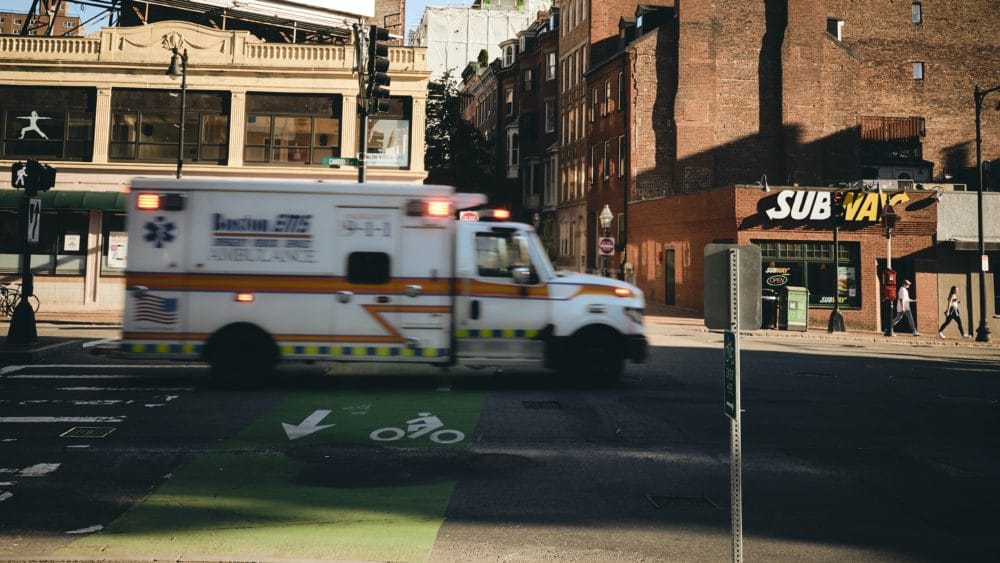EMS Radios: Leaping into the Digital Era

Amidst crisis, nothing is more important than prioritizing the well-being of a patient. This is why we don’t need to tell you that during turbulent moments, having access to real-time communication is essential.
Lapses in communication or garbled and missed messages are not only detrimental to your entire EMT team but to the patient currently seeking your care.
Ensuring that the moment a call from dispatch comes through communication is spot on as aligning important information between dispatchers and EMTs needs to be seamless.
From the location of the emergency, data on the injury, or the best route to take during rush hour traffic, efficient communication is a risk that should be avoided at all costs. Otherwise, without a solid communication plan, you will not be able to get to the patient and provide care as swiftly as humanly possible.
Asking the Hard Questions
Truly ask yourself, is your entire crew is outfitted with the best-in-class solution for communication during critical moments? If you aren’t sure, take a moment to contemplate these questions:
- Do EMTs on duty receive calls from dispatch immediately with zero turn-around time?
- Can dispatch and EMTs correspond back and forth with ease?
- Are there any gaps in communication that can be improved?
- Can all teams communicate in real-time?
- Is all information about the patient being received?
Check Out How We Are Helping Companies on the Front Lines Against the Battle of COVID-19 (+free subscription)
This begs the question, does your current walkie talkie and/or radio solution make the grade?
EMS Radios (AKA Walkie Talkies) have been the solution to connect dispatchers to EMTs. However, with advanced progress in technology, this is no longer the most dependable or trustworthy method.
If you are still reliant on traditional forms of radios, it might be time to access whether this dated solution is truly the best mode of communication.
We would even suggest it is (gasp!) a bit broken. Here’s why:
Lag Time
During the heart of an emergency, you might notice the signal is weak, the sound quality is fuzzy, or other connection issues may stand in the way of taking care of the patient immediately.
Two-way radios and PTT technology both inescapably come with downtime. Without incredible reliability, you may miss important communications. You need a system that you can count on when you need it. If you can’t, it’s time to consider an alternative.
Lost information and conversations
If you use PTT or walkie talkie technology that cannot record conversations, you’re going to have to repeat information later and waste time. Not to mention, you won’t be able to replay relevant information.
Ask yourself, can you afford to miss information during a high-stress situation?
Why Modernize EMS Radios and Go Digital
You’re probably asking yourself, “So, you’re saying my current communication solution is broken, but what should I do?”
Luckily, the answer is simple. What if I told you there was a way to revive your entire team’s communication with little oversight and an intuitive interface?
Rest assured, the switch will be easier than it sounds and your team will adjust quickly – as they already use a smart device on a daily basis. Best of all, these digital programs can be implemented on mobile devices (iOS or Android), iPad, iPod, and even via the web.
Benefits of a Walkie Talkie App
Advanced technology: Outdated EMS radios often prove to be frustrating. It doesn’t accomplish the task as smoothly as you need it to. It may seem like you’re saving yourself some money in the beginning, but it will ultimately cause more stress and expenses than modern technology would. It’s less of a hassle than you might think. It will aid your team in painting an accurate picture of the patient’s conditions to other medical providers when arriving at the hospital.
Broader Range: Limited range and distance can cause problems and worst of all outages may occur. Using an app on a smart device gives you virtually zero limitations. You can connect via WiFi or data, so rest assured, there will not be any lapses in communication.
Precise Documentation: A lot of back and forth will occur when connecting dispatchers to EMTs. When conversations can be revisited, you can hear any decisions that were made or perhaps contemplate other measures you might consider taking in the future.
Committing to a Switch
As modernized approaches develop we have to consider re-designing the landscape in which our medical professions can communicate. Although you might want to welcome change, it is hard to give up methods that you have been using for years.
While more healthcare organizations go digital, it’s time to consider if you lack efficient communication.
Why hinder your team’s true potential of doing what they do best. Caring for people.
We know how hard your team works diligently to save lives. Having lapses in communication shouldn’t be an added worry onto your already heavy plate.
It might be time to retire those old EMS radio systems. If you haven’t given much thought to migrating your team to a digital solution, we highly suggest it.
